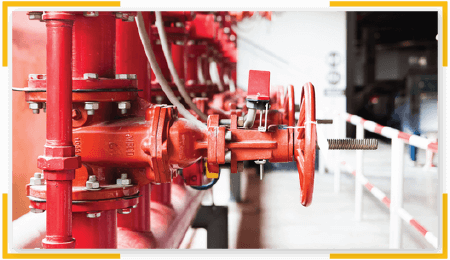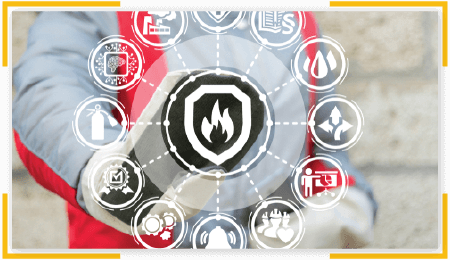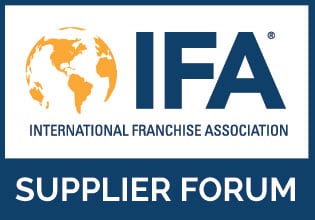
Clearing FDNY Objections
How It Works?

Step 1
You send us FDNY objections notice received

Step 2
We work on redesign & recalculations

Step 3
We send you new design as per changes
Get In Touch
Need help or additional information?
Give us a call on
(786) 788-0295
NY Engineers will only provide responses to the FDNY objections (Drawing revisions). Contact Us if you are looking for Fire Alarm Design.
Get in touch - 212-575-5300
Clearing FDNY Objections
- Shortest turnaround time of 2 week
- Correct FDNY violations on time, at the lowest possible cost.
- Detect fire hazards and avoid FDNY violations.
- Make sure your fire protection systems stay compliant.
- Avoid fire protection issues in renovations and expansions.
Clearing FDNY objections
Correct FDNY violations
Correct any FDNY violations in your building, at an optimal cost and within the assigned deadline.
Inspect your fire protection systems
Get a professional inspection of your fire protection systems, and prevent other FDNY violations.
Plan new construction
Are you planning a new construction? Meet the NYC fire code and FDNY rules from the start.
Clearing FDNY Objections

Fire protection systems have a minimal margin of error in buildings, and a malfunction can have severe consequences. When systems like space heating and air conditioning do not work properly, they cause a disruption of normal activities and discomfort for occupants. However, when a fire protection measure fails to respond, the consequences can be life threatening and the resulting property damage can be severe.
Even if a major fire is controlled without human casualties, the building owner may face legal action for a malfunctioning fire protection system. The coverage of insurance plans may also be voided, leaving the full cost of repairing property damage to the owner. In a few words, one of the best ways to safeguard your property is having reliable fire protection.
Given the consequences of an uncontrolled fire, the design standards and building codes that regulate fire protection are among the most demanding. The National Fire Protection Association (NFPA) is the industry authority in the USA, and their standards have been recognized and used around the world. State governments use the NFPA standards as reference when writing their own fire protection codes, and these are strongly enforced by local authorities.
Fire protection requirements for buildings in New York City are among the most demanding in the world, with strict enforcement by the NYC Department of Buildings (DOB) and the NYC Fire Department (FDNY). This can be expected, considering the high population density in the city, and also the large number of buildings in close proximity.
Meeting Fire Protection Requirements in New York City
When a project does not meet the NYC fire code or FDNY rules, the consequences vary depending on the current state of the project:
- If the building is still in the design stage, it will not be approved until the design is fully compliant with the NYC Fire Code and all applicable standards.
- If the building is already in the construction stage, it cannot be used legally for the intended occupancy until all fire protection systems are correctly installed and operating.
- Fire code and FDNY violations in existing buildings are the most serious issues, since they threaten occupants. When an FDNY violation is issued for an existing building, the consequences for the owner can include financial penalties and even legal action. However, owners normally have an opportunity to correct fire hazards before facing the most serious consequences.
To ensure fire code compliance, the best solution is working with qualified fire protection engineers from the start. This ensures a quick design approval with little or no corrections, speeding up the design phase. The fire protection layouts and specifications will be clearly documented, providing a useful reference for contractors, and later for the building maintenance staff.
When the construction phase starts, the design firm can oversee the installation of fire protection systems, making sure they meet the approved design. Once the building starts operating, fire protection systems will be well documented for maintenance purposes and modifications, making sure they stay compliant. The as-built fire protection documents are also a useful reference for any building renovations or additions.
Design standards and building codes are updated at regular intervals, and this includes NFPA standards and the NYC Fire Code. Normally, a new code version is not retroactive for existing buildings that were compliant at the time of construction. However, fire protection requirements that are considered critical by local authorities may become mandatory for existing properties.
- In New York City, fire protection requirements that apply for existing buildings are normally published in Local Laws.
- A well known example was Local Law 26 of 2004, published in response to 9/11. LL26/04 made fire sprinklers mandatory for high-rise office buildings and many other commercial properties.
- The deadline for LL26/04 was July 1, 2019. All buildings that were covered by this law received a code violation if they lacked automatic sprinklers by the deadline.
Building renovations and additions are also subject to the latest version of the NYC fire code, even if the original building was compliant with a previous version. The same recommendations given for new constructions apply here - getting in touch with a qualified engineering firm, to meet all applicable codes from the start of the project.
Fire protection systems use mechanical, electrical and plumbing components. In other words they involve the three technical disciplines of MEP engineering. Like in any other MEP design, Building Information Modeling (BIM) is a powerful tool to optimize the cost of fire protection systems, while meeting codes and ensuring a reliable operation.
Getting an FDNY Notice of Violation: What to Do?

An FDNY Notice of Violation (NOV) is an official document indicating that a property is not compliant with the NYC Fire Code, the Fire Department Rules, or both. Two main aspects must be addressed to close a NOV:
- A hearing and fine, which are managed by the Environmental Control Board (ECB).
- Making the building compliant, getting approval from the FDNY.
When a building owner gets an FDNY violation, correcting the issues described is always mandatory. However, the owner may be waived from the ECB hearing and financial penalty in some cases. Serious fire hazards result in a Violation Order instead of a Notice of Violation, requiring immediate action without a scheduled hearing.
First-time offenders who get a Notice of Violation may be offered a cure date. The offender can avoid the ECB hearing and penalty by meeting three conditions before this date:
- Admitting guilt for the infraction against the NYC fire code or FDNY rules
- Correcting all the issues described in the Notice of Violation
- Submitting a Certificate of Correction to the NYC Fire Department
The FDNY accepts Certificates of Correction directly or by mail, but keep in mind that the cure date may be missed if the certificate is mailed. As long as the certificate is accepted before the cure date, you do not have to attend the hearing, your are waived from penalties, and the violation status is changed to cured. You will get a Notice of Correction card, also known as a yellow card, which means that no further action is required by the FDNY for that specific violation.
Note that some FDNY violations have a mandatory hearing: You can avoid the fine by correcting the issue before the cure date, but you must still attend the ECB hearing. All FDNY violations are issued to named respondents that can be individuals, companies, or other entities. However, each violation is tied to a property in the FDNY records.
The Certificate of Correction is a mandatory requirement, even if you cannot fix the issue before the cure date. You can no longer avoid the ECB hearing and fine after this date, but the certificate is still required as proof of compliance.
How Severe Is an FDNY Violation?
The FDNY issues a violation as a standard procedure for all infractions, ranging from minor administrative issues to urgent conditions that create a serious risk. The most severe infractions may even be considered criminal offenses. FDNY violations are detected during routine inspections or based on complaints, and there are four main types:
- Notice of Violation
- Violation Order
- Criminal Summons
- Vacate Order
As previously mentioned, a Notice of Violation contains an infraction, a hearing date, a fine, and possibly a cure date. These violations are normally issued for administrative faults that do not cause an immediate fire hazard. For example, if a building owner is missing documents or inspection reports required by the FDNY, a Notice of Violation will likely be issued. To address more serious conditions that create fire hazards, the FDNY uses Violation Orders.
Violation Order : A Violation Order is used to address an imminent fire hazard. Unlike a Notice of Violation, which has a scheduled hearing, a Violation Order demands immediate action, with a deadline to fix the fire hazard. There is no initial penalty in a Violation Order, but ignoring it is a serious offense, which may lead to a Criminal Summons or a Vacate Order.
Criminal Summons : A Criminal Summons is normally issued for ignoring a violation order. The respondent must attend a New York Criminal Court, and the consequences can include major financial penalties or incarceration. When you get a Violation Order, you should get in touch with experienced fire protection engineers to address the issue ASAP.
Vacate Order : A Vacate Order prohibits entering the affected building, until the owner corrects the issue for which the order was emitted. Vacate Orders are very disruptive for both residential and commercial buildings, since people cannot use their apartments and companies cannot use their commercial spaces. When a Vacate Order is emitted, building owners must fix the issue ASAP to allow occupants back into the property.
Avoiding FDNY Violations and Keeping Your Building Compliant
Like with any building issue, preventing FDNY violations is more efficient than fixing them when they occur. When you work with qualified fire protection engineers from the start, the layout of your fire protection systems is optimized to reduce cost while meeting code. You will also get a set of design documents that clearly describes the installation, which will help you stay compliant during the service life of your building:
- If the NYC Department of Buildings introduces a mandatory upgrade with a Local Law, you can quickly identify the changes required to keep your building compliant.
- If you plan a building renovation or expansion, the as-built construction documents will include fire protection systems in high detail. You can know the exact starting point, and design the renovation or expansion accordingly to meet code.
Fire protection engineers can also collaborate with your maintenance staff to identify issues before they lead to an FDNY violation. This way, you can plan how to service and upgrade your fire protection systems, instead of having to meet a Violation Order with a tight deadline.
In new buildings, working with qualified fire protection engineers is beneficial even before you start construction. Consider that the NYC fire code is very stringent, and design errors can delay your project approval. However, by working with professionals you can get a design approved with little or no changes.
A high-performance fire protection design can also help you get better terms from insurance companies, while reducing the premiums paid. Even if your building is never affected by a fire incident, the professional design services will have paid off by reducing insurance costs.
Reliable fire protection systems can also be used as a marketing tool by real estate companies. When negotiating a lease with a potential tenant, building owners can explain how their personnel and investment will be safeguarded by reliable fire protection measures.



